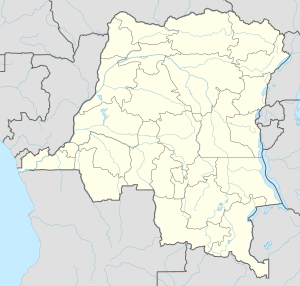The examples and perspective in this article may not represent a worldwide view of the subject. (February 2018) |
| Niemba ambush | |||||||
|---|---|---|---|---|---|---|---|
| Part of the Congo Crisis | |||||||
| |||||||
| Belligerents | |||||||
| Luba militia | |||||||
| Commanders and leaders | |||||||
|
| Unknown | ||||||
| Strength | |||||||
| 11 men | ~100 men | ||||||
| Casualties and losses | |||||||
|
| ||||||
The Niemba ambush took place on 8 November 1960,[1] when an Irish Army patrol in Congo-Léopoldville was ambushed, the first time the Irish Army was embroiled in battle since the 1922-23 Irish Civil War. Ireland had deployed troops as United Nations Operation in the Congo (ONUC) peacekeepers.
The notoriety of the attack, and the allegations of mutilation and cannibalism that circulated in the Irish popular press in its aftermath, led to the word "baluba" becoming a synonym for any "untrustworthy and barbaric" person in certain parts of Ireland.
However, the ambush was largely the result of mistaken identity. The Luba tribesmen seem to have mistaken the Irish UN troops for European mercenaries in the service of the State of Katanga, with whom they had recently been in conflict, the Baluba being opposed to Katangese secession. The Irish were part of a UN contingent that was sent to halt the Katangese secession from the Congo.[2]
- ^ Cite error: The named reference
horrorwas invoked but never defined (see the help page). - ^ "Letters from Niemba: Irish troops in the Congo, 1960". historyireland.com. 5 March 2013. Retrieved 27 December 2016.

